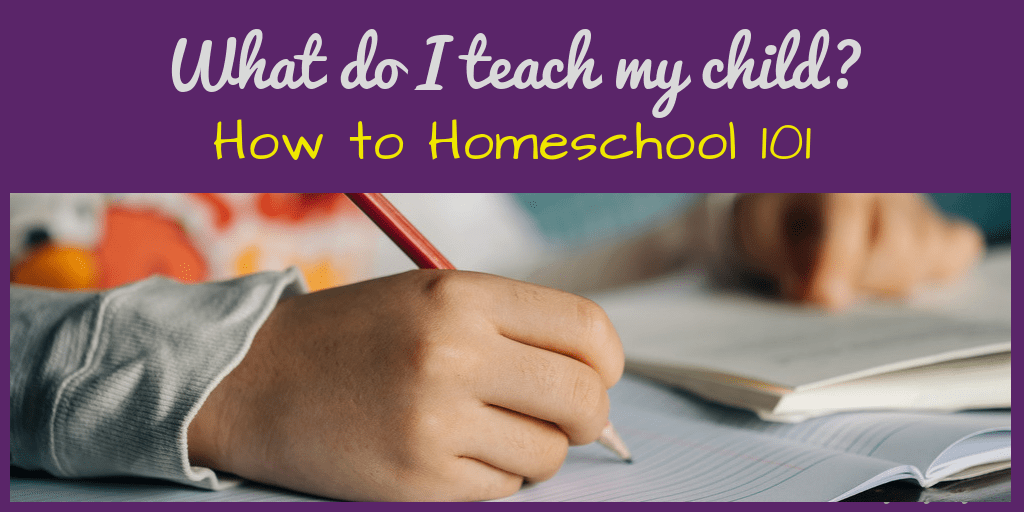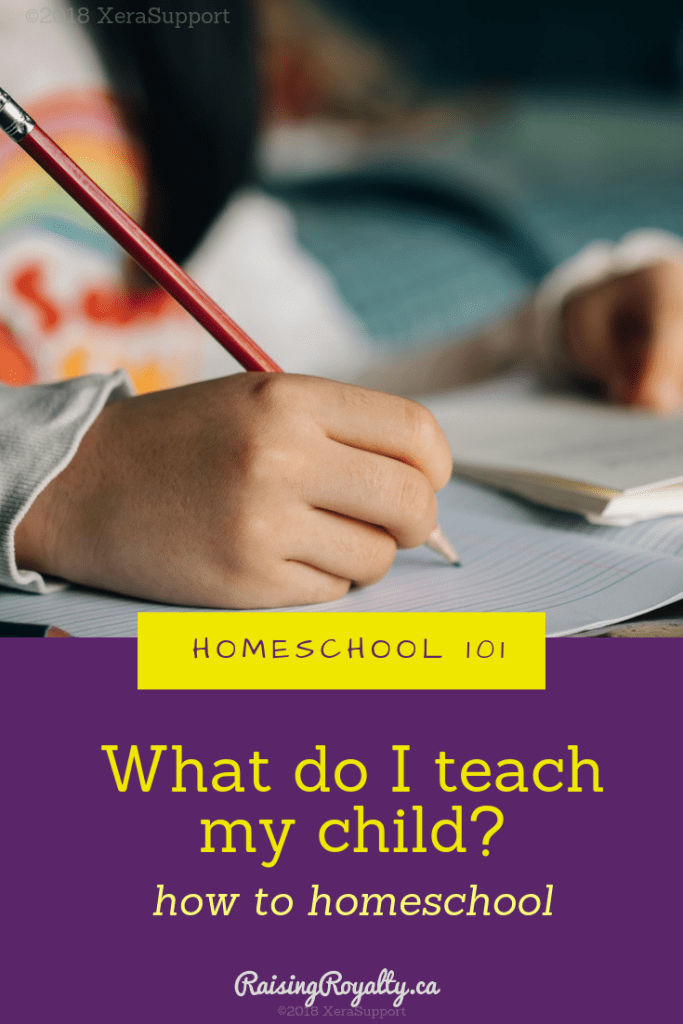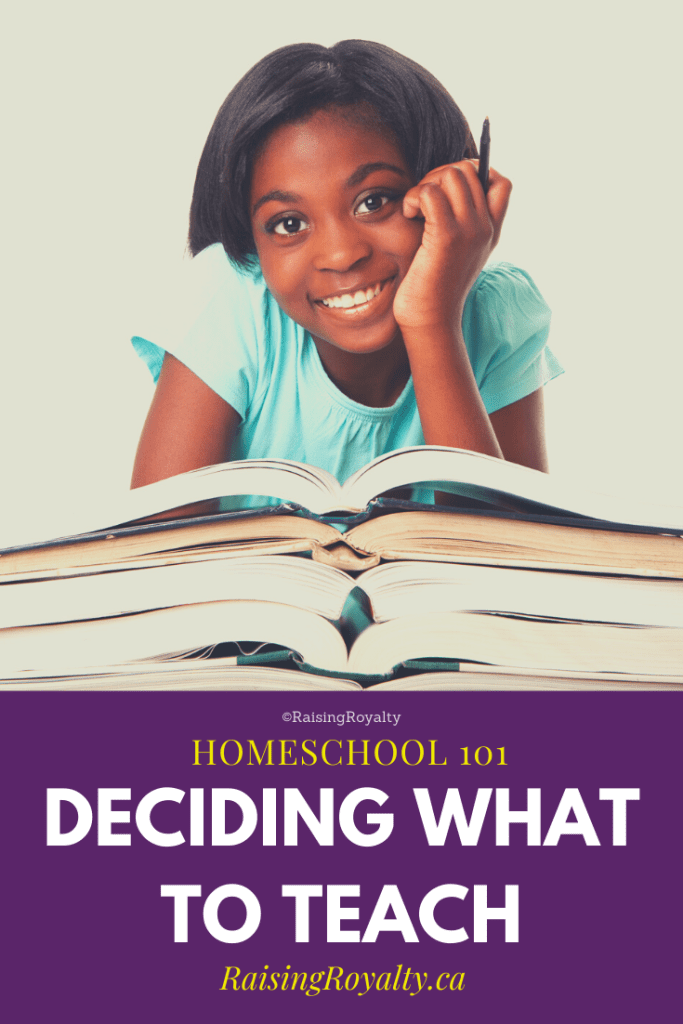

How do you know what to teach your child?
One of the most frequently asked questions I see is how to homeschool. Many new homeschoolers can be confused about what to teach their child and when to teach it. We all have a general idea of what our kids should be learning, of course. The basics of math, reading, science and history aren’t hard to figure out. But knowing what the specific lessons are and when they should be taught is sometimes a bit tricky.
In public and private school systems, curriculums come with a map called a scope and sequence. This is basically an overview of what will be taught, and when it will be taught. Many public school systems will make their scope-and-sequences available online for public viewing.
There are a lot of things to teach.
It can get pretty confusing when you think of math facts and grammar and novel studies and science labs. When do they need to learn addition and subtraction? What about the history of your state or province? What grade covers sentence structure and punctuation?
There is a lot of things to teach and keeping it all straight can be challenging. That’s why a scope-and-sequence is so useful.
You need a map to know how to homeschool.
A scope and sequence is what we call the overall plan of what gets taught when. You can have a scope and sequence for one subject for one grade, or an overarching scope and sequence for every subject in every grade, or any combination.
I’ve developed my own scope and sequence. (Get your grade here!) Many curriculum publishers will provide their own, and you can get a general one at Worldbook. There are also books you can use as a resource, like the What your ____ Grader Should Know series.
Not all scope-and-sequences are created equal.
For example, a lot of time can be spent on studying US history. Many American-based all-in-one boxed curriculums will spend years on just US history alone. But, no offense to you Americans, the US isn’t the only country in the world, and by focusing on the US to the exclusion of all other history can lead to a myopic worldview. There is at least 6000 years of recorded history to study! Personally, I plan on teaching my children a (hopefully) more balanced study of all 6000 years.
An all-in-one curriculum, such as SonLight or Abeka, will include a full scope and sequence for each grade as part of their kit. If you plan on using a full boxed curriculum, you will receive their year-plan or full K-12 year plan as part of your purchase, so you don’t need to worry about developing your own.
Some styles of homeschooling don’t need a scope-and-sequence plan.
Unschoolers and child-lead learners tend not to worry about scope and sequences either. Since they are more focused on natural child development, what “should” be taught by when isn’t something that they are concerned about. You might find uneven spurts of development and interest, but by the time your child is ready for a career or college, they’ll have everything they need to know.
A scope and sequence is a starting point of how to homeschool.
Those of us in the middle, with our variations of eclectic homeschooling, should probably have some kind of overarching plan in place. Whether you use the World Book one referenced above, or one from the all-in-one curriculum and substitute your own materials — or if you, like me, create one for yourself — having one is a starting point for your planning each year.
You can create your own scope and sequence.
To create a scope and sequence isn’t that hard. While I was creating my own, I took a bunch of typical courses of study from various places, and then combined them into my own version.
It takes a little bit of thought however.
First, consider the various areas of study: mathematics, language arts, fine arts, science, history, health and life skills, physical education, and if you’re religious, religious studies. Then break each subject down by grade/age/year level, and list the topics or skills that need to be learned in that level.
How does this work practically?
For example, let’s look at math. In creating a scope and sequence for math, you would look at the skills needed. Since skills build upon skills, obviously you would need to teach addition before multiplication. If you work backwards from the top (algebra? calculus?) and list the skills needed back to the beginning (counting? numeracy?), you’ll get a good idea of the groups of skills you want to teach each year.
You can do the same thing for every subject area that involves skills.
Language arts is a broad subject category with sub-categories of penmanship, literature, reading, phonics, spelling, grammar, composition and vocabulary. Not all sub-categories are taught every year. You would need to teach phonics, sight words and reading before starting spelling and literature. But since it’s skill-based, you can work backwards in each subcategory until you have your levels of skills.
Content subjects scope-and-sequences are easy to make.
With the content subjects, such as history and science, picking topics to cover each year makes creating a scope and sequence easy.
For example, science includes such disciplines such as biology, physics, astronomy, and geology. You can take bits and pieces for each science discipline and plan your topics accordingly.
Personally, in grade 1, we cover the water cycle and weather (hydrology and meteorology). In grade 2, we look at fossils, dinosaurs, land forms and the rock cycle (geology and paleontology).
It doesn’t matter what order you pick your topics, or even if you cover them all — there are tons to choose from.
Generally though, planning for post-secondary means that high school credits in biology, chemistry and physics will be required. So in your elementary years, you’ll want to look at topics that prepare your children to be familiar with the basics in those areas. That way they can be ready to move on.
What about physical education or art class?
Physical education and fine arts can often be covered through extracurricular activities. In my family, we use swimming lessons, dance classes, gymnastics, choir and drama to teach these subjects.
It takes some of the pressure off me to cover everything. It also gives my children some fun ways to learn other than just at home.
Look around at your community for options here.
Don’t forget life skills.
Life skills don’t necessarily have to be part of your scope and sequence either, but you may want to have a plan for them anyway. Teaching the basics of how to handle money, cooking and cleaning, and personal hygiene are important no matter where your child will end up as an adult.
You can also include classes such as computer use and internet safety, a foreign language, parenting and child care, or first aid in this area.
Maybe you’ll also want to add in topics such as drug and alcohol use (or reasons to avoid, depending on your values), self-defense, voting and how to navigate the legal, financial or government systems in your area of the world.
A scope-and-sequence is a plan of how to homeschool.
A scope and sequence is a plan that tells you what you will teach your child when. It helps to make sure that you cover all the subjects and topics you feel are important for a good education, without worrying about missing anything.
All you need to create a plan is a notebook and pen. Take some time to think, working backwards from the end result to the beginning. But if you need help, using a pre-made one like this one, is a place to start.
Need help getting started homeschooling? Get the book!
What is on your plan this year?




